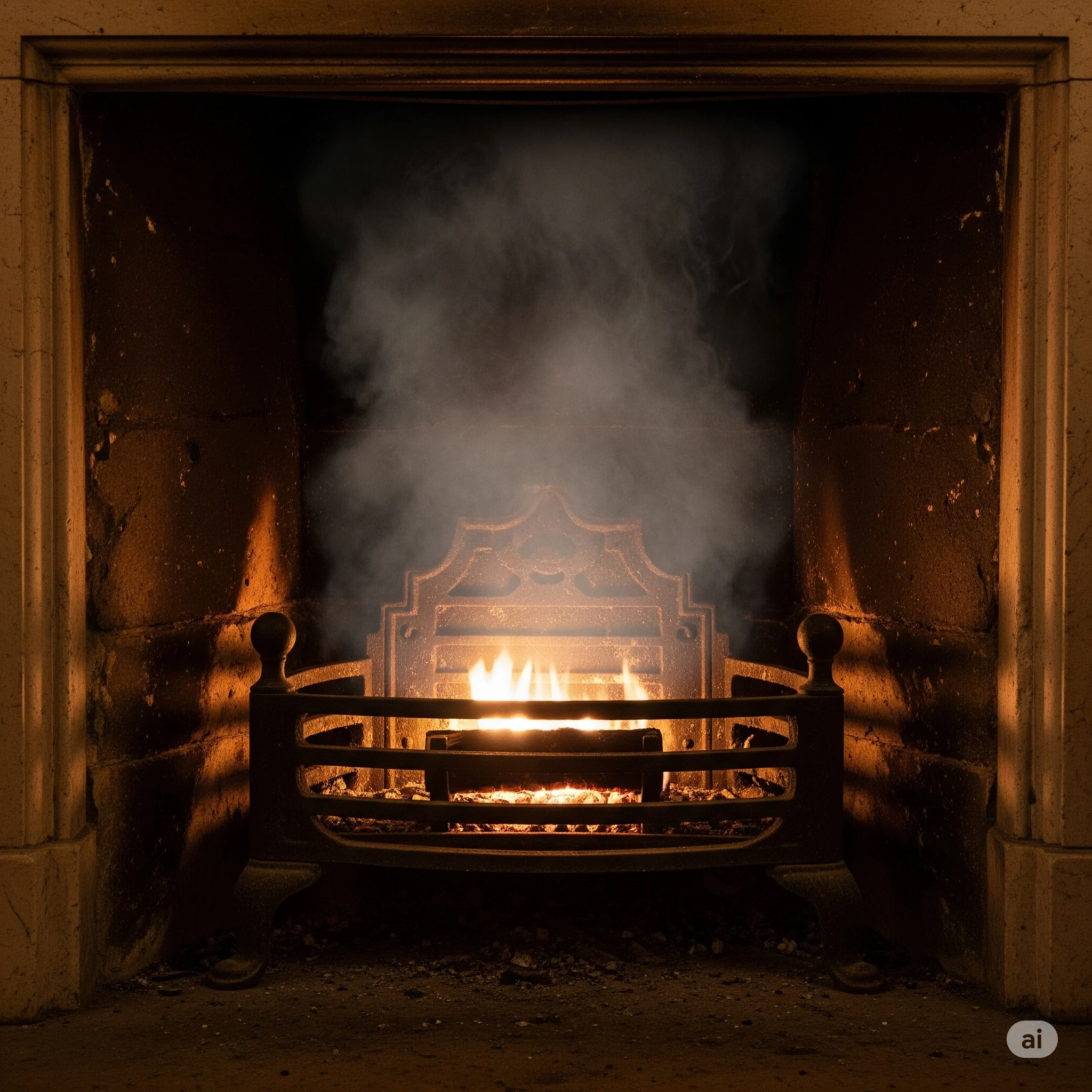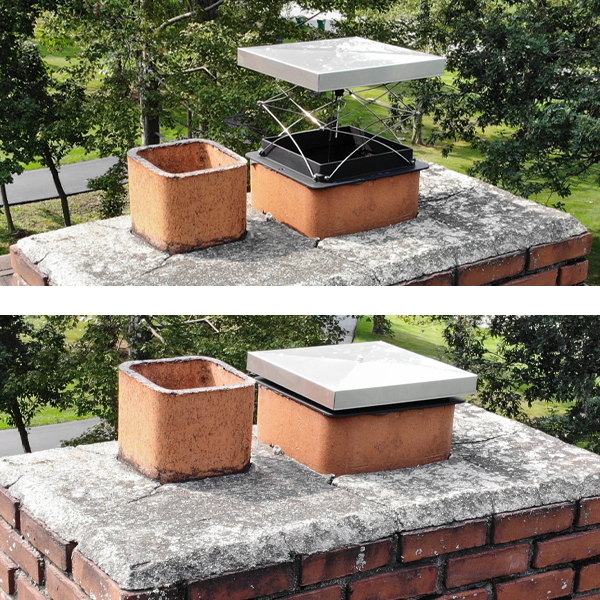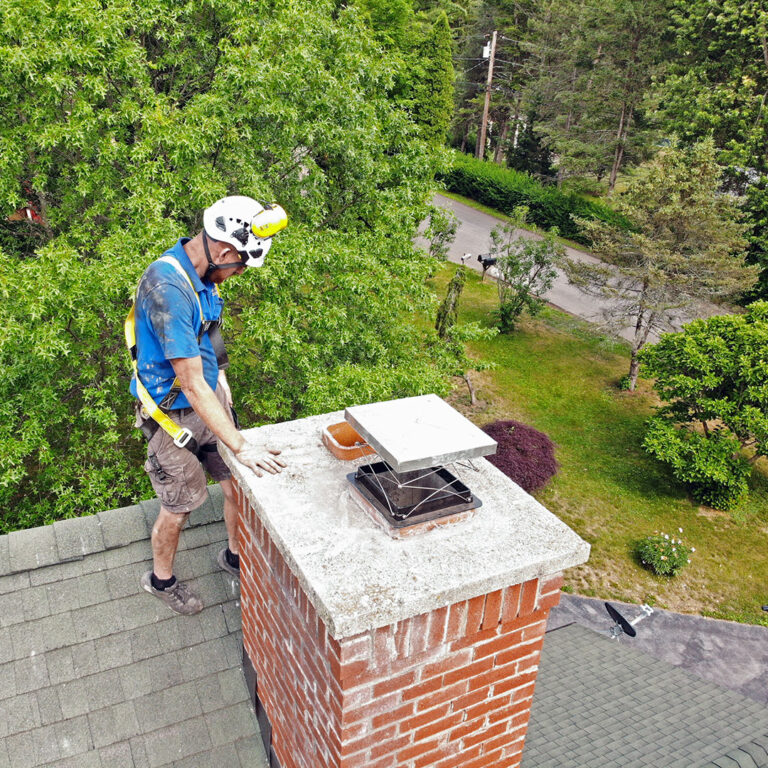While it is still quite hot in Georgia, as the cooler months start to approach, many Georgia homeowners begin dreaming of cozy evenings by the fire. But before you light that first log or turn on your gas logs, there’s one critical question to ask: Is your chimney ready for winter?
At Southern Chimneys, we’ve helped thousands of homeowners in the Atlanta area and throughout Georgia keep their fireplaces safe, functional, and beautiful year-round. A neglected chimney can cause serious issues—from smoke and draft problems to dangerous chimney fires or carbon monoxide drafting into your home.
Here are the top signs your chimney needs repairs before winter hits, so you can stay warm and safe this season.
1. Visible Cracks in the Chimney or Firebox
If you can see cracks in the masonry or brick panels, either on the exterior of your chimney or inside the firebox, don’t wait. Cracks allow moisture to seep in, especially during Georgia’s rainy season, which accelerates deterioration and weakens the structure.
- Exterior cracks could mean shifting, water damage, or foundation issues.
- Interior firebox cracks may indicate worn-out refractory panels or heat damage.
Southern Chimneys often sees this issue during pre-winter inspections and catching it early can prevent far more expensive repairs later.
2. White Staining (Efflorescence) on the Chimney Exterior
White, chalky stains on your chimney may look harmless, they’re actually a sign of serious trouble. This substance—called efflorescence—appears when water passes through your masonry and dissolves natural salts. When the moisture evaporates, it leaves behind a visible residue.
This is a major red flag for moisture intrusion, one of the most destructive forces for chimneys in Georgia. Moisture can deteriorate mortar, rust components, and even cause mold or mildew in your attic or walls.
Fix it before winter—or risk worsening the problem as freezing temps expand trapped water inside your masonry.
3. A Strong Odor Coming from the Fireplace
Does your fireplace smell like campfire, burnt wood, or even something worse—like a musty, sour smell?
If so, you could be dealing with:
- Creosote buildup (a leading cause of chimney fires)
- Moisture and mold
- Animal nesting or debris blockages
In Georgia’s humid climate, even an unused chimney can develop moisture and odor issues, especially during summer storms. If it smells bad now, just wait until you light a fire.
This is where chimney cleanings and camera scope inspections become essential. A professional chimney sweep from Southern Chimneys can remove buildup, address venting issues, and ensure everything is clean and odor-free before winter.
4. Smoke Backing Up Into the Home
If smoke isn’t venting properly, it’s not just annoying, it’s dangerous. Poor draft or improper airflow can lead to carbon monoxide buildup, which is odorless and potentially deadly.
Common causes of backdraft include:
- A blocked or damaged flue
- Creosote or soot buildup
- Incorrect damper operation
- Structural damage, such as a collapsing flue liner
- Chimney height
If you’re experiencing smoke inside the house—even just a little—it’s time to call the pros. This should be addressed before fireplace season starts to avoid delays, major safety risks and to ensure your fireplace is ready for use once those chilly nights hit.
5. Rust on the Firebox or Damper
Noticing rust flakes or brown/orange streaks around your fireplace? That’s a sure sign of excess moisture and metal corrosion.
Rust can:
- Compromise the damper, causing poor airflow and energy loss
- Weaken metal components in the firebox or flue
- Signal a larger moisture problem that may already be affecting your masonry or roof
If your fireplace maintenance schedule doesn’t already include an annual check for rust and water intrusion, now’s the time to start.
6. Water Leaks or Stains Around the Fireplace
Water is your chimney’s worst enemy. If you see water stains, peeling paint, bubbling drywall, or moldy smells around your fireplace, these are red flags that water is getting in.
In Georgia, this is often due to:
- Missing or damaged chimney caps
- Cracked crown seals
- Failing flashing around where the chimney meets the roof
If your home is in Atlanta or the surrounding areas, the combination of rain, humidity, and winter temperature swings makes waterproofing and cap repair a critical part of chimney care.
7. Loose or Missing Bricks and Mortar
Chimney bricks and mortar don’t last forever—especially with repeated exposure to moisture, heat, and freezing temperatures. If you notice:
- Spalling bricks (bricks with flaking faces)
- Loose or crumbling mortar joints
- Gaps between bricks
…it’s time for tuckpointing or masonry repair.
Southern Chimneys offers comprehensive masonry restoration throughout Georgia. Don’t let a small crack become a costly rebuild.
8. Animals or Debris in the Chimney
Raccoons, birds, squirrels—you name it. Animals love to take shelter in unused chimneys. If you’re hearing scratching, chirping, or notice leaves and twigs falling into your firebox, your flue might be occupied.
An animal blockage can:
- Completely obstruct airflow
- Introduce parasites or bacteria into your home
- Lead to chimney fires when nests are ignited
A quality chimney cap will prevent this, and a professional sweep can remove any existing debris safely and clean up any mess these cute birds/animals may have left.
9. Your Chimney Hasn’t Been Serviced This Year
Even if you don’t see obvious damage, not following a consistent fireplace maintenance schedule is a risk in itself. According to the Chimney Safety Institute of America (CSIA) and The National Fire Protection Association (NFPA), all fireplaces should be inspected annually and cleaned as needed.
That’s why Southern Chimneys encourages every Atlanta-area homeowner to schedule a chimney cleaning before winter. This ensures:
- Your fireplace is safe and functional
- Your home is protected from smoke, fire, and moisture damage
- You avoid last-minute service delays during peak season
10. Want to Upgrade or Elevate Your Space
If your fireplace looks outdated, doesn’t match your current style, or you simply want to breathe new life into your living room, now is the perfect time to consider a fireplace upgrade before winter.
A fireplace is often the centerpiece of your home, especially during the colder months. It’s where families gather, where guests are entertained, and where lasting memories are made; but an old or unattractive fireplace can drag down the entire feel of your space.
At Southern Chimneys, we specialize in fireplace renovations and aesthetic upgrades for homeowners across Atlanta and surrounding area. Whether you’re dreaming of a sleek modern gas insert, a timeless stove insert, or a custom herringbone firebox, we can help you design a look that fits your taste and lifestyle.
Here are a few ways we can help upgrade your fireplace:
- Convert a wood-burning fireplace to gas logs for a cleaner, more efficient heating option
- Install a gas insert or stove insert that fits your style and aesthetics
- Upgrade your firebox to a herringbone or a small brick pattern
Southern Chimneys is Atlanta’s trusted source for fireplace remodeling, let’s make your vision a reality.
Why Pre-Winter Chimney Repairs Matter in Georgia
Winter might not be brutal in Georgia, but fluctuating temperatures, rain, and humidity can wreak havoc on damaged masonry or neglected flues. If your chimney is already compromised, the freeze/thaw cycle will make it worse.
Plus, the moment the weather cools down, service demand skyrockets—which can mean longer wait times for repairs. That’s why we recommend booking your cleaning and camera scope inspection appointment with Southern Chimneys in late summer or early fall.
Schedule Your Chimney Inspection Today with Southern Chimneys
Southern Chimneys is proud to serve Atlanta, GA and surrounding communities with expert chimney inspection, repair, and cleaning services. We’re family-owned, fully certified, and committed to giving every customer the safest, cleanest, and coziest fireplace experience possible.
Don’t wait for the cold to catch you off guard. Be proactive and:
- Schedule your chimney inspection
- Stick to your fireplace maintenance schedule
- Fix any chimney issues before they become expensive hazards
Call Southern Chimneys today at 678.744.4046 to make sure your fireplace and chimney is winter-ready!
The post Winter Chimney Repair: Top Signs Your Chimney Needs Fixing Before Cold Weather first appeared on Southern Chimneys.
This post first appeared on https://southernchimneys.com


 What’s a Chimney Damper, Anyway?
What’s a Chimney Damper, Anyway? Think Your Damper Needs a Checkup?
Think Your Damper Needs a Checkup?